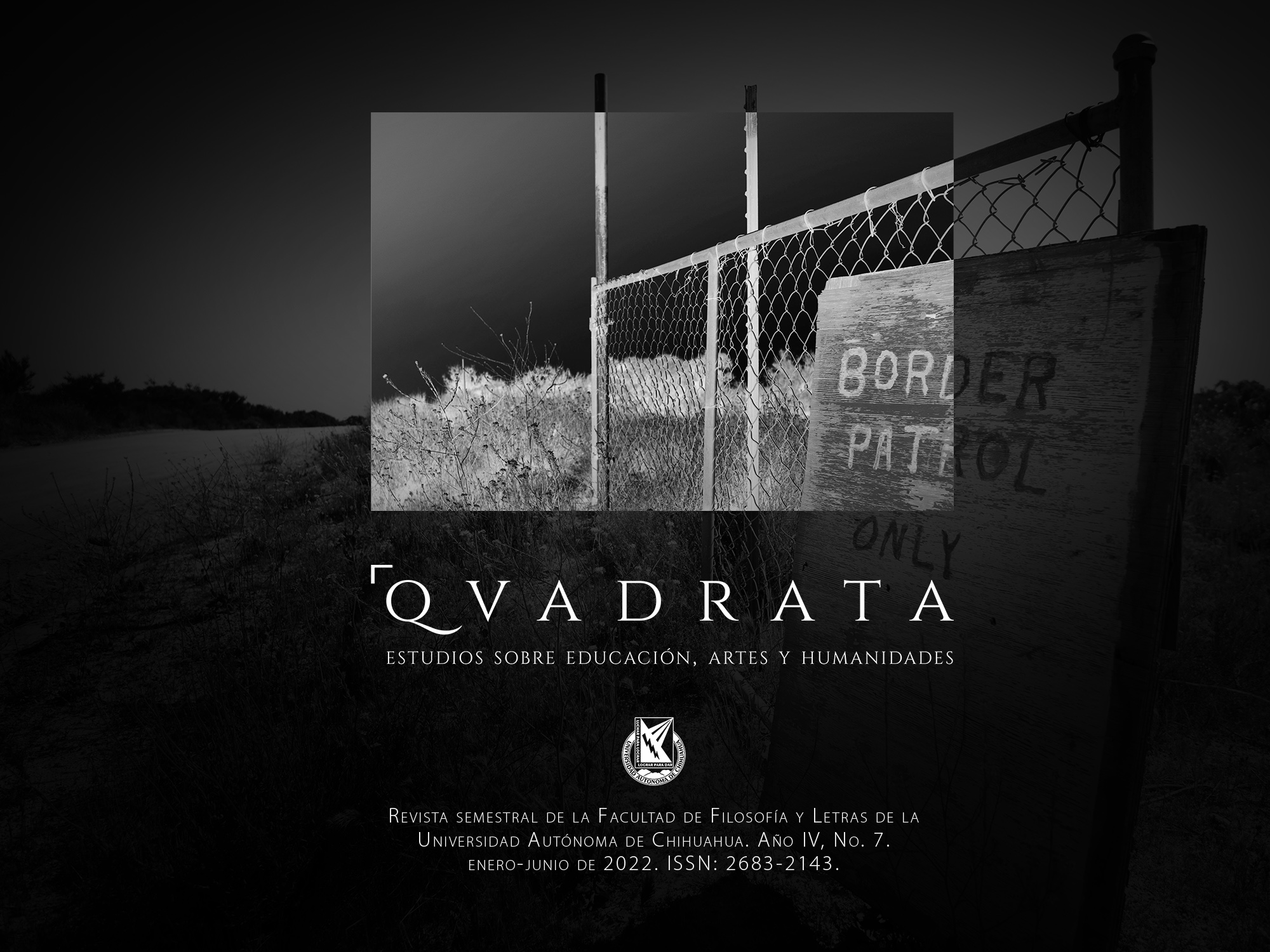Estrategias pedagógicas en la representación de un pasado: el caso de la serie Narcos México (2018)
DOI:
https://doi.org/10.54167/qvadrata.v4i7.1000Keywords:
Audiovisual fiction, series, past, memoryAbstract
The serial audiovisual fictions that circulate through the various media, both channels and platforms, participate through certain textual, narrative and discursive strategies, in conjunction with their audiences in the construction of meaning about history and the past. This article wants to go deeper into the implementation of these strategies in the series, the audiovisual fiction series Narcos México (2018) offered on the on-demand audiovisual content platform Netflix, which affect an ideological underpinning of a version of the past. For this, the dimension of expression and content were observed in the textual plane, as well as the conjunction of elements that make up the narrative, the rhetorical and the aesthetic to explain the implications in the collective memory about the past that the audiovisual fiction series aims to represent.
References
Bernard, C y D. Miro (productores). (2018). Narcos México [Serie de televisión]. Estados Unidos y México: Gaumont International Television.
Cabalin, C. y L. Antezana. (2020). Melodrama y pedagogía pública: La construcción de memoria desde la ficción televisiva. Comunicación y sociedad (17), pp. 1-19.
Cai, S. (2016). Contemporary Chinese TV Serials: Configuring Collective Memory of Socialist Nostalgia via the Cultural Revolution. Visual Anthropology 29(1), pp. 22-35.
Casetti, F. y F. Di Chio. (1991). Cómo analizar un filme. Barcelona: Paidós.
Chatman, S. (1980). Story and discourse. Narrative Structure in fiction and film. Ithaca & London: Cornell University Press.
Chicharro-Merayo, M. y J. C. Rueda-Laffond. (2008). Televisión y ficción histórica: Amar en tiempos revueltos. Comunicación y Sociedad 21(2), pp. 57-84.
Chicharro-Merayo, M. y S. Gómez. (2014). Memoria de un golpe de estado televisivo: ficción histórica sobre el 23-F. Convergencia Revista de Ciencias Sociales 21(65), pp. 219-245.
Dettleff, J; G. Cassano y G. Vásquez. (2019). Introducción: la ficción televisiva iberoamericana en la época de la distribución por internet. Orozco, G. y M. I. Vassallo de Lopes. (eds.). Modelos de distribución de la televisión por internet: actores, tecnologías, estrategias. Obitel Anuario 2019. Sao Paulo: Globo universidade, 2019, pp. 21-35.
Edgerton, G. (2011). Television as Historian. A Different Kind of History Altogether. Edgerton, G. y Rollins, Peter C. (eds.). Television Histories. Shaping Collective Memory in the Media age. Lexington: Kentucky University Press, pp.1-5.
Erll, A. (2008). Cultural Memory Studies: An Introduction. Nünning, A y Erll, A. (eds.). Cultural memory Studies. An international and interdisciplinary handbook. Berlin: Gruyter, pp.1-11.
Fish, S. M. y R. T. Truglio. (2001). G" is for Growing Thirty Years of Research on Children and Sesame Street. Mahwah: Lawrence Erlbaum.
Fiske, J. (1989). Undestanding popular culture. London: Routledge.
Francescutti, P. (2019). La narración audiovisual como documento social e histórico: enfoques teóricos y métodos analíticos. Revista de Metodología de las Ciencias Sociales (42), pp. 137-161.
Giroux, H. (2001). Private satisfactions and public disorders: Fight Club, patriarchy, and the politics of masculine violence. A Journal of Composition Theory 21(1), pp. 1-31.
Gómez-Tarín, F. (2012). El análisis fílmico y el cine contemporáneo: ¿La era de la postmodernidad? Montajes (1), pp. 7-31.
Grainge, P. (2003). Memory and Popular film. Manchester: Manchester University Press.
Igartua, J. J. (2010). Identification with characters and narrative persuasion through fictional. Communications. The European Journal of Communication Research 35(4), pp. 347-373.
Kligler-Vilenchik, N. (2011). Memory-Setting: Applying Agenda Setting Theory to the Study of Collective Memory. M. Neiger, O. Meyers, & E. Zandberg. (eds.). On Media Memory: Collective memory in a new media age. New York: Palgrave McMillan, pp. 226-237.
Landsberg, A. (2004). Prosthetic Memory The transformation of American remembrance in the age of mass culture. Nueva York: Columbia University Press.
Langford, B. (2005). Film genre. Hollywood and Beyond. . Edinburgh: Edinburgh University Press.
Martín-Barbero, J. (1993). De los medios a las mediaciones: comunicación, cultura y hegemonía. Bogotá: Editorial Gustavo Gili.
Maudlin, J. y J. Sandlin. (2015). Pop Culture Pedagogies: Process and Praxis. Educational Studies 51(5), pp. 368-384.
Mulligan, K. y P. Habel. (2013). The Implications of Fictional Media for Political Beliefs. American politics Research 41(1), pp. 122-146.
Mulvey, L. (1989). Visual and Other Pleasures. New York: Palgrave.
Neale, S. (2000). Genre and Hollywood . London-New York: Routledge.
Nichols, B. (1997). La representación de la realidad. Barcelon: Paidós.
Orozco, G. (1987). Televisión y prodcción de de significados (tres ensayos). Guadalajara: CEIC y AMI.
Sandlin, J., J. Burdick y E. Rich. (2016). Problematizing public engagement within public pedagogy research and practice. Discourse Studies in the Cultural Politics of Education 38(6), pp. 1-13.
Spence, L. y V. Navarro. (2011). Crafting Truth: Documentary Form and meaning. Brunswick: Rutgers university Press.
Tufte, T. (2007). Soap operas y construcción de sentido: mediaciones y etnografía de la audiencia. Comunicación y Sociedad (8), pp. 89-112.





 QVADRATA. Estudios sobre Educación, Artes y Humanidades año V, número 9, enero-junio de 2023, es una publicación semestral editada por la Universidad Autónoma de Chihuahua. Calle Escorza #900. C.P. 31000, Chihuahua, Chih. Tel. (614) 439-1500 ext. 3844,
QVADRATA. Estudios sobre Educación, Artes y Humanidades año V, número 9, enero-junio de 2023, es una publicación semestral editada por la Universidad Autónoma de Chihuahua. Calle Escorza #900. C.P. 31000, Chihuahua, Chih. Tel. (614) 439-1500 ext. 3844, 
